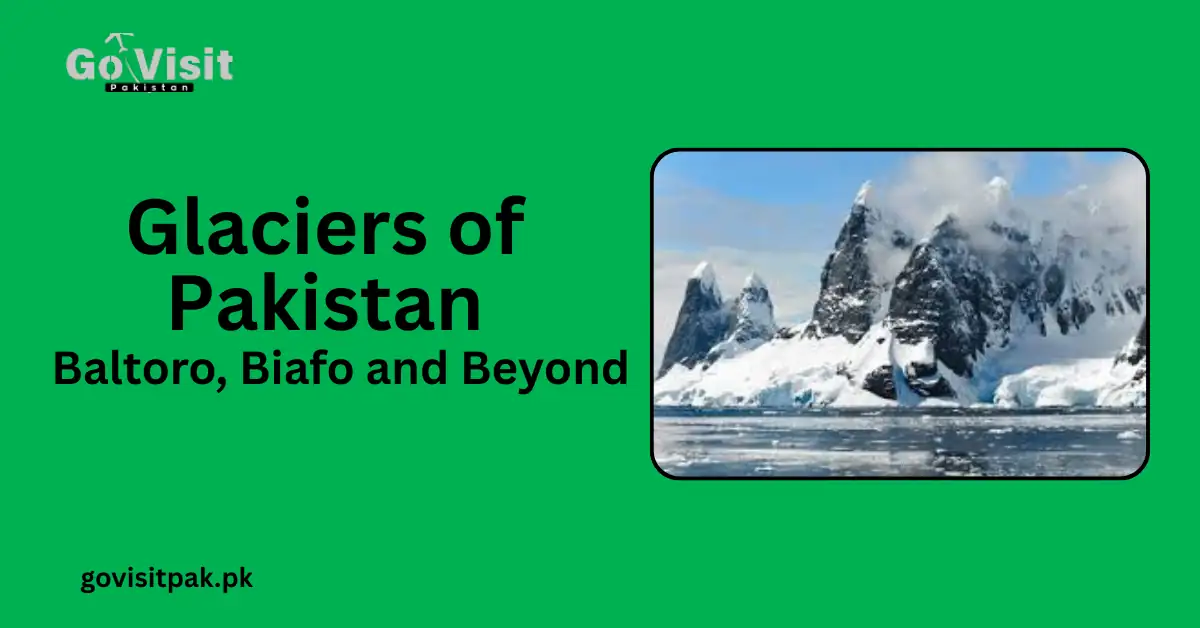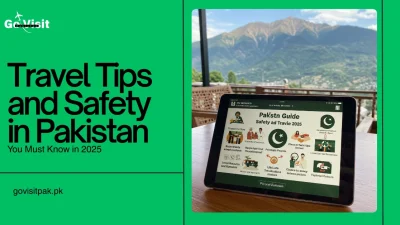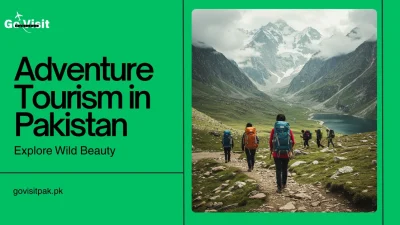In this blog you will learn about the glaciers of Pakistan, particularly Baltoro, Biafo, Batura and Siachen. Pakistan boasts more than 7,000 glaciers, a record figure in the non-polar world, primarily in Gilgit-Baltistan where the Karakoram, Hindu Kush, and Himalaya mountain ranges converge. These glaciers are rivers of ice, supplying the Indus River and sustaining millions of life.
You will learn about their beauty, significance, and significance in rivers, agriculture, and electricity. The blog also informs us how climate change is melting them, the effect on human beings, and how these frozen marvels are nature’s treasure and adventure for Pakistan.
Do you want to know what makes Northern Pakistan so different and full of charm?
When one hears about the most stunning destination to visit in Northern Pakistan, one can quite readily visualize grand mountains, blue skies and rivers that shine like silver. But under these valleys there lies treasure far greater—gigantic rivers of ice that never stop flowing. These are the glaciers of Pakistan, and they are more magical than ever words can say. They are not chunks of ice; they are the essence that gives rivers, valleys, and humans life.
Pakistan holds over 7,000 glaciers, the largest number of any country outside the polar region, in Gilgit-Baltistan, where the Karakoram, Hindu Kush, and Himalaya ranges meet. The Baltoro, Biafo, Batura, and Siachen are among the most prominent.
These glaciers give fresh water to the Indus River, which helps millions of people. But because of climate change, they are melting fast, causing more floods and also the risk of less water in the future.
Baltoro glaciers of Pakistan is one of the world’s longest glaciers outside the polar region, located in the Karakoram range. Biafo Glacier joins the Hispar Glacier to form one of the world’s longest glacial systems outside the polar regions. Batura Glacier is located in the Hunza Valley, Pakistan’s longest glacier aside from Baltistan. Siachen Glacier is the longest Karakoram glacier.
These ice rivers are not just cold grounds. They are repositories of life, hope and beauty for Pakistan.
What is the Location of Glaciers in Pakistan?
Pakistan’s glaciers are like hidden treasures found in the northern areas, mostly in Gilgit Baltistan.
This area is special because three big mountain ranges—the Himalaya, Hindu Kush, and Karakoram—come close together like friends meeting at one place.
There are not so many glaciers this close to each other anywhere else in the globe. Let’s take a look where they are found and why they matter.
- Gilgit Baltistan is a glacial hub: It has over 7,000 glaciers, the most in any region outside the South and North Poles. A natural giant refrigerator!
- It takes you to the titans: Skardu valleys take you to the Baltoro Glacier, a massive river of ice near K2, the second-highest mountain in the world.
- Hunza and its icy wonders: In Hunza, you will find the Batura Glacier, one of the longest outside Baltistan. It’s surrounded by peaks that look like they touch the stars.
- Other valleys shine too: Places like Nagar and Astore have smaller glaciers that feed streams and rivers. They’re like little helpers for the big glaciers.
- Nature’s water tanks: The glaciers store water in the form of ice and release it slowly in summer, keeping rivers and green meadow flowing.
The glaciers transform Northern Pakistan into the most beautiful place on Earth. They are not ice—they are histories of the land, carved over thousands of years.
Baltoro Glacier – Jewel of the Karakoram
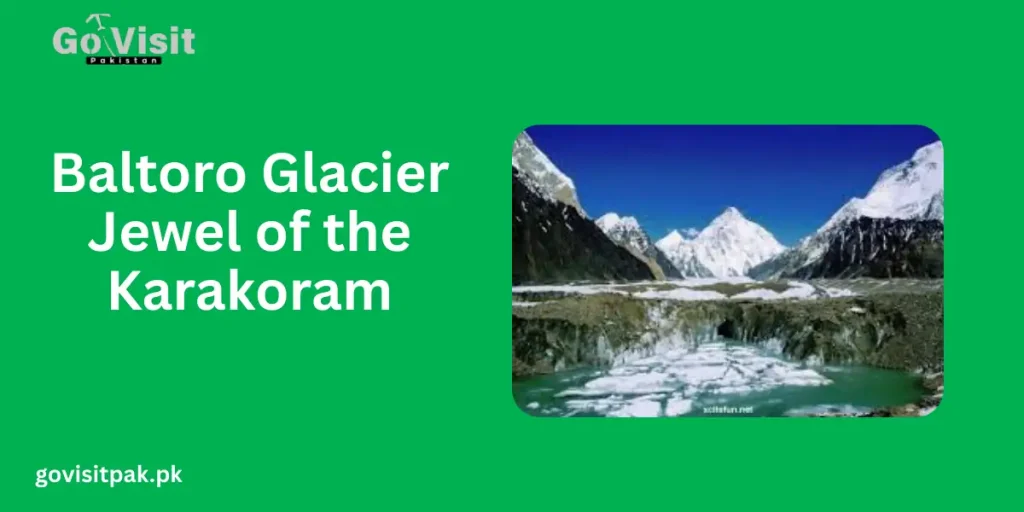
The Baltoro glaciers of Pakistan is a glittering crown within the Karakoram Range. It is one of the most famous glaciers in the world, its length is 36 miles (57.9 km) , Height: 11,580 ft (3,529.6 m) with gigantic mountains such as K2, Broad Peak, and Gasherbrum surrounding it. The idea of a massive icy highway carrying you to an expanse of snow and fantasy arises. Let’s discover the unique features of Baltoro.
- A trekker’s haven: Baltoro Glacier trekking is tough but wonderful. People trek for days on ice and snow, camping under starry skies and rising to golden light on snow-filled summits.
- Concordia, Baltoro’s hub: Concordia, a flat icy expanse where the Godwin-Austen Glacier comes together in, is at the terminus of Baltoro. From here four peaks over 8,000 meters tall can be seen!
- One of the longest glaciers: Baltoro is one of the longest glaciers outside the polar regions. It’s like a frozen river that never stops moving.
- A source of life: Baltoro gives water to rivers, which helps farmers grow food and keeps villages alive.
- A view like no other: The mountains around Baltoro make it feel like you’re standing in a painting made by nature herself.
Baltoro is not just ice—it is where dreams do come true for adventurers and a testament to how big the world is.
Biafo Glacier – Land of Ice and Snow
The Biafo Glacier is another of the Karakoram giants, its length is 27 miles (59.5 km) and height is 10,366 ft (3,159.6 m).
It is unique in that it merges with the Hispar Glacier to form one of the longest glacial systems beyond the poles. To walk here is to enter a still, icy world. Let us know more about this frozen marvel.
- A 59.5-kilometer-long icy route: Biafo is 59.5 kilometers long, and when it merges with Hispar, it is more than 100 kilometers! That’s the size of some towns!
- A scary but beautiful trek: The hike to the Biafo Glacier Pakistan is scary, with deep crevices in the ice, but the scenery of white-tipped mountains is worth it!.
- Mountain adventure: Visitors arrive for adventure tourism in Pakistan to traverse the Hispar Pass and witness the Hunza Valley. It is a trip to a different world.
- Quiet and mighty: Quiet and serene is how it feels standing on Biafo, but the glacier is mighty, carving the landscape for two millennia.
- A travellers’ gift: Trekkers pitch tents under starry nights and breathe life in the fresh, frigid air of this frozen landscape.
- Biafo is not ice—it’s a story of ugliness and beauty, awaiting your discovery.
Other Famous Glaciers of Pakistan
Along with Baltoro and Biafo, Pakistan has many other famous glaciers in Pakistan. Each of them has its own charm and story. From the gigantic Siachen Glacier to the scenic Batura glaciers of Pakistan , these ice rivers beautify the north with sparkles. Let’s know a few of them.
- Siachen Glacier, longest: Siachen length is 45 miles (72.4 km) and its height: 12,150 ft (3,703.3 m)
- It’s a favorite but is situated in a disputed area between India and Pakistan.
- Batura Glacier in Hunza: The glacier is longest outside Baltistan and provides dramatic views of the Batura Wall peaks. It’s a tourist’s paradise.
- Length: 40 miles (64.4 km) Height: 8,030 ft (2,447.5 m).
- Hispar Glacier link: Hispar joins Biafo to create a super-long ice road, perfect for thrill-loving trekkers.
- Length: 38 miles (61.2 km) Height: 10,500 ft (3,200.4 m)
- Trango Glacier beauty: This mini-glacier near the Trango Towers is a paradise for climbers who love climbing steep mountains.
- Length: ~20 km | Elevation: avg 5,284 m (range: 4,091 m – 6,571 m)
- Yengunta Glacier:
- Yengunta Glacier is 22 miles (35.4 km) long and lies in the Karakoram range of Baltistan.
- Chiantar Glacier:
- Chiantar Glacier stretches 21 miles (33.8 km) in the Hindu Kush range of Chitral.
- It reaches a height of 12,720 ft (3,877.1 m), making it a high-altitude glacier.
- Tirchmir Glacier:
- Tirichmir Glacier is 18 miles (29 km) long and lies near the famous Tirich Mir peak in Chitral.
- It rises to 11,210 ft (3,416.8 m), giving it an impressive setting.
- This glacier adds to the stunning views of the Hindu Kush mountains.
- Atrak Glacier:
- Atrak Glacier stretches 18 miles (29 km) in the Chitral region of the Hindu Kush.
- It stands at a height of 10,000 ft (3,078.5 m) above sea level.
- It plays an important role in providing fresh water to the valleys below.
- Karanbar Glacier:Karanbar Glacier is 16 miles (25.5 km) long, located in the Hindu Kush range of Swat.
- It sits at 10,237 ft (3,120.2 m) and is surrounded by scenic mountain views.
- The glacier supports rivers and adds to the natural landscape of Swat.
There are thousands of glaciers in Gilgit Baltistan: From Astore to Nagar, every valley has glaciers that create the landscape and supply water to rivers.
These glaciers make the gglaciers of Pakistan of Gilgit Baltistan a treasure house of ice, beauty, and wonder for one and all to discover.
Longest Glaciers Outside the Polar Region
Pakistan is well known for having the longest glaciers in the world, apart from the polar regions. Everybody has the perception that only the North and the South Poles have humongous glaciers, but the Karakoram disprove them. These glaciers are huge, old, and full of life. Let’s find out why they are so special.
- Baltoro’s grandeur: Baltoro Glacier is 63 kilometers long, one of the biggest outside the poles. It’s an icy highway!
- Siachen’s and Hispar Glacier Combination: The Biafo Glacier and Hispar Glacier come together to form a system covering over 100 kilometers, one of the world’s longest.
- Siachen’s record: Siachen Glacier is over 70 kilometers, a massive glacier and wonder of the Karakoram.
- Batura’s beauty: The Batura Glacier in Hunza is a long one, exemplifying the truth that Pakistan’s glaciers are spread in many valleys.
- The Third Pole: Karakoram is called the Third Pole because there are enormous volumes of ice inside it, like a world’s giant water bank.
These glaciers are not only huge in size but they move, melt and supply water to millions of people, thus making Pakistan a real land of icy giants.
Significance of Glaciers in Pakistan’s Rivers
The contribution of glaciers of Pakistan is enormous as they are the lifeblood of the country’s rivers. Rivers in Pakistan would have no water without them. These ice rivers feed the Indus River system, providing sustenance to millions. Let’s see how they accomplish this.
- Water for rivers: In summer, when glaciers melt, they discharge water into streams that come together to form the Indus River, causing it to flow strongly.
- Helping farmers: Glaciers provide water to farmers to cultivate crops like rice and wheat that provide sustenance to families all over Pakistan.
- Lighting homes: Glacier water fuels dams that produce electricity, lighting homes and schools all over the country.
- Nature’s bank: Glaciers store water in its ice form for winter and let it out slowly in summer, like an eternal bank.
- Life of millions: Over 50 million people are dependent on glacier water to drink, farm, etc.—it’s the lifeline for Pakistan.
Glaciers are unsung heroes, giving water, food, and power to the earth. They are not ice—they are the ones making Pakistan green and alive.
Pakistan Glaciers Melting
glaciers of Pakistan is a giant problem. The temperature is rising, and pollution’s black smoke is causing these cold rivers to shrink at an accelerated pace compared to the past. The effect of climate change on Karakoram glaciers is real, and it’s changing life in the mountains. Let’s understand this problem.
- Melting too rapidly: Increasing temperatures and pollution are melting the glaciers at a rate higher than they can form, reducing them year by year.
- Water scarcity in the future: If the melting of glaciers continues, in the near future, there will be no ice left, leading to fewer waters for drinking, farming, and electricity.
- Melting floods: When glaciers melt excessively, they cause landslides and floods that ruin houses, farmlands, and villages in Gilgit Baltistan.
- Water scarcity in the future: If the melting of glaciers continues, in the near future, there will be no ice left, leading to fewer waters for drinking, farming, and electricity.
- Economic losses: Less crops equal less food and less electricity, which hurts business and families
- Saving the Third Pole: The Karakoram, the Third Pole, holds huge reservoirs of ice, and we must preserve it for the world.
Preserving glaciers isn’t just about saving ice—it is about saving lives, homes and Pakistan’s future.
Glaciers and Tourism in Pakistan
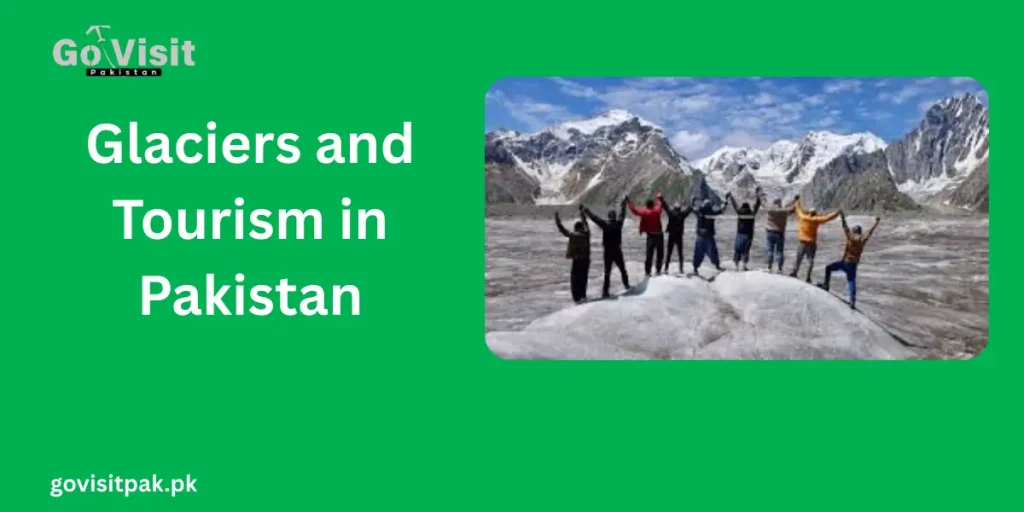
Tourism and glaciers of Pakistan are the closest of friends. Tourists come from all over the world every year to marvel at these icy beauties in the north. Treks over glaciers like Baltoro and Biafo are an experience that makes you a different person for life. Let’s find out why tourists are so fond of them.
- Trekker’s paradise: Tourists come for Baltoro Glacier trekking and other trails, trekking on ice and sleeping under nights bright with stars.
- Best time to visit: The best time to travel to the glaciers of Pakistan is summer (June-September), when the weather is clear and safe for trekking.
- Breathtaking landscapes: Glaciers show white summits, golden sunrise, and lush meadows, and each moment appears magical.
- Benefiting local people: Tourists hire guides and buy food, giving cash to mountain villages and enabling families to make a living
- Life-changing experience: Climbers tell us how glaciers soothe them, empower them, and thank them for the beauty of nature
Glaciers are not just to look at—there’s adventure, joy and hope they bring to tourists and locals.
Conclusion:
The story of glaciers of Pakistan s is not one of snow and ice only. It is a story of beauty, of life and survival. From the sparkling Baltoro Glacier to the huge Biafo Glacier, from peaceful Batura to mighty Siachen, every glacier is a treasure in Northern Pakistan’s crown.
They are the best place in Northern Pakistan to go not just because how lovely they are but also because they teach us how fragile life is. They feed rivers, sow crops, supply power, and offer adventure. Pakistan would lose its beat if they didn’t exist.
But they are melting fast. Global warming is stripping them away from us, turning ice into floods and droughts. Now is the time to act. Preserving these glaciers preserves life itself.
When we look into Baltoro, Biafo and beyond, we are not just looking at frozen rivers. We are looking at hope, history, and promise tomorrow. These glaciers are not just property of the mountains; they are property of everyone who drinks, eats and lives in Pakistan. They are our future, and we must treasure them.
FAQs:
How many glaciers are there in Pakistan?
There are over 7,000 glaciers of Pakistan, more than in any other country outside the North and South Poles. That’s a whole lot of ice!
What are glaciers good for in Islamabad?
Glaciers provide essential meltwater that supports rivers, farming, drinking water, and electricity generation.
How do glaciers help the Indus River?
They release water into the Indus River, helping grow crops, supply clean water, and power hydroelectric dams.
What is the longest glacier in Pakistan?
The Siachen Glacier is the longest, measuring more than 70 kilometers in the Karakoram Range.
What is the ideal time to visit glaciers?
Summer, June to September, is the ideal time because it is clear weather and safe for trekking.
Are glaciers in Pakistan melting?
Yes, they are melting rapidly due to climate change, which can lead to floods now and less water in the future.


